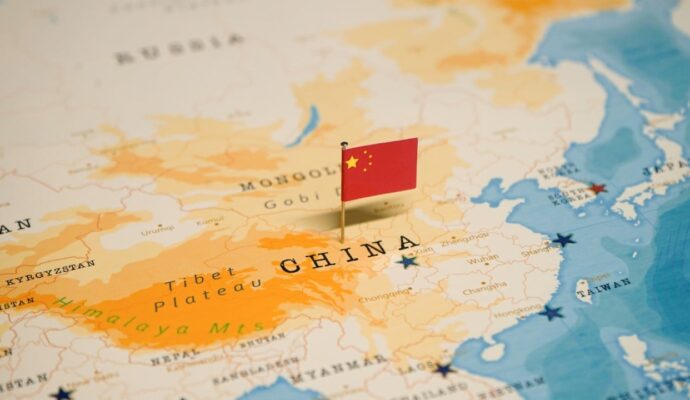The provinces of Hubei, Shaanxi, Gansu and Qinghai have been warned over slow progress towards energy efficiency goals, economic planning body the National Development and Reform Commission (NDRC) said in an online statement released on Saturday.
Officials from the body’s environmental resources department held a series of meetings over the past week with local NDRC representatives from the four provinces to issue the warnings, the statement said.
China’s carbon dioxide emissions set to hit all-time high in 2023: report
China’s carbon dioxide emissions set to hit all-time high in 2023: report
The NDRC repeated demands and directions set by President Xi Jinping as well as requirements in China’s 14th five-year plan, reminding regional officials of the priority given to energy conservation.
Energy intensity, a measure of energy efficiency, is one of the compulsory goals under the plan, which lays down the blueprint for social and economic development between 2020 and 2025 for China – the world’s top carbon emitter.
Regional efforts to reduce carbon emissions must be carried out at “higher levels with high quality” to achieve “maximum benefits” at “minimum cost”, officials were told.
Advertisement
“In the first two years of the 14th five-year plan, energy consumption in Hubei, Shaanxi, Gansu, Qinghai and other regions grew rapidly,” the NDRC statement said.
“After deducting the consumption of raw materials and renewable energy, the decline in energy intensity still lags behind the requirements under the 14th five-year plan and in some areas it has even risen instead.
“The energy-saving evaluation in relevant areas remains lax, with weak management of high energy consuming, high emission, low quality projects, [rendering] the energy-saving situation very serious.”
Officials from the local branches of the NDRC were also reminded to “resolutely” put an end to power rationing in the name of energy saving.
Advertisement
Power cuts are commonplace in China and are usually restricted to industrial users. However, in late 2021, the country suffered a severe power supply crisis affecting more than 20 provinces.
Not only was industrial activity curtailed but many households also suffered prolonged outages.
The crisis was largely triggered by some local governments limiting or even cutting power supply in order to meet Beijing’s demands for reducing energy consumption per unit of gross domestic product (GDP).
Advertisement
China’s aim for 2025 is to cut energy consumption per unit of GDP by 13.5 per cent from 2020, while keeping total consumption at “reasonable levels”.
The NDRC statement said the local officials concerned had pledged to “comprehensively sort out the energy-saving work situation, identify the problems, pinpoint the causes, and adopt targeted and effective measures to ensure the completion of the binding targets” in the five-year plan.
In a pledge made to the United Nations in September 2020, Xi said China’s carbon emissions would peak by 2030 and the country would become carbon neutral by 2060.
Advertisement
In recent months, he has reiterated China’s “unswerving” commitment to delivering on climate goals and to “actively and steadily work towards carbon peaking and carbon neutrality”.
China will determine its own path to carbon reduction: Xi Jinping
China will determine its own path to carbon reduction: Xi Jinping
China has also repeatedly emphasised the need to secure energy security, and invested heavily in renewable energy such as wind and solar power.
Advertisement
Total national power consumption in July climbed 6.5 per cent year on year to 888.9 billion kilowatt-hours, while January-July consumption rose 5.2 per cent to 5196.5 billion kWh, according to official data.
Advertisement


